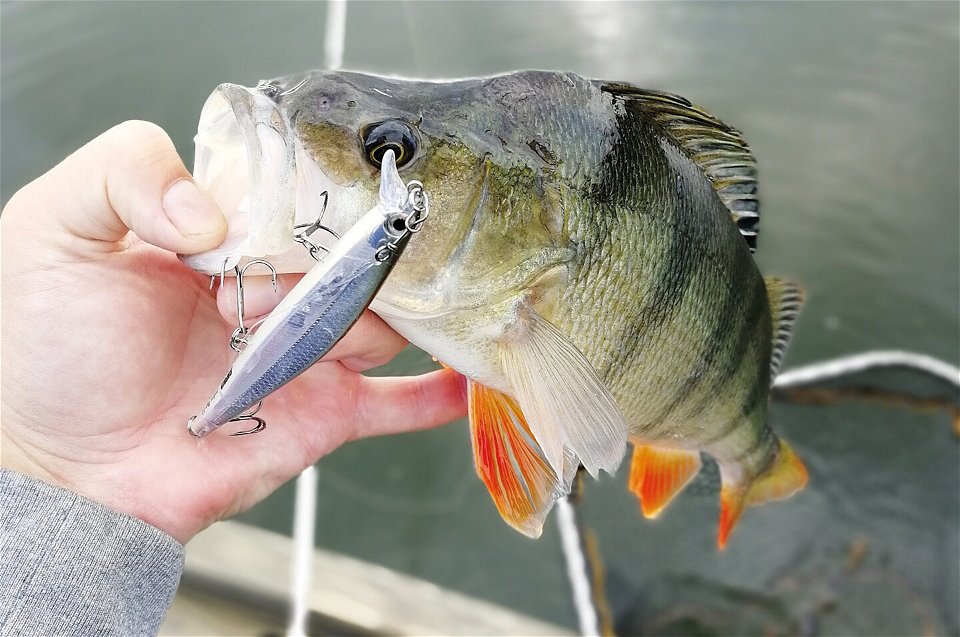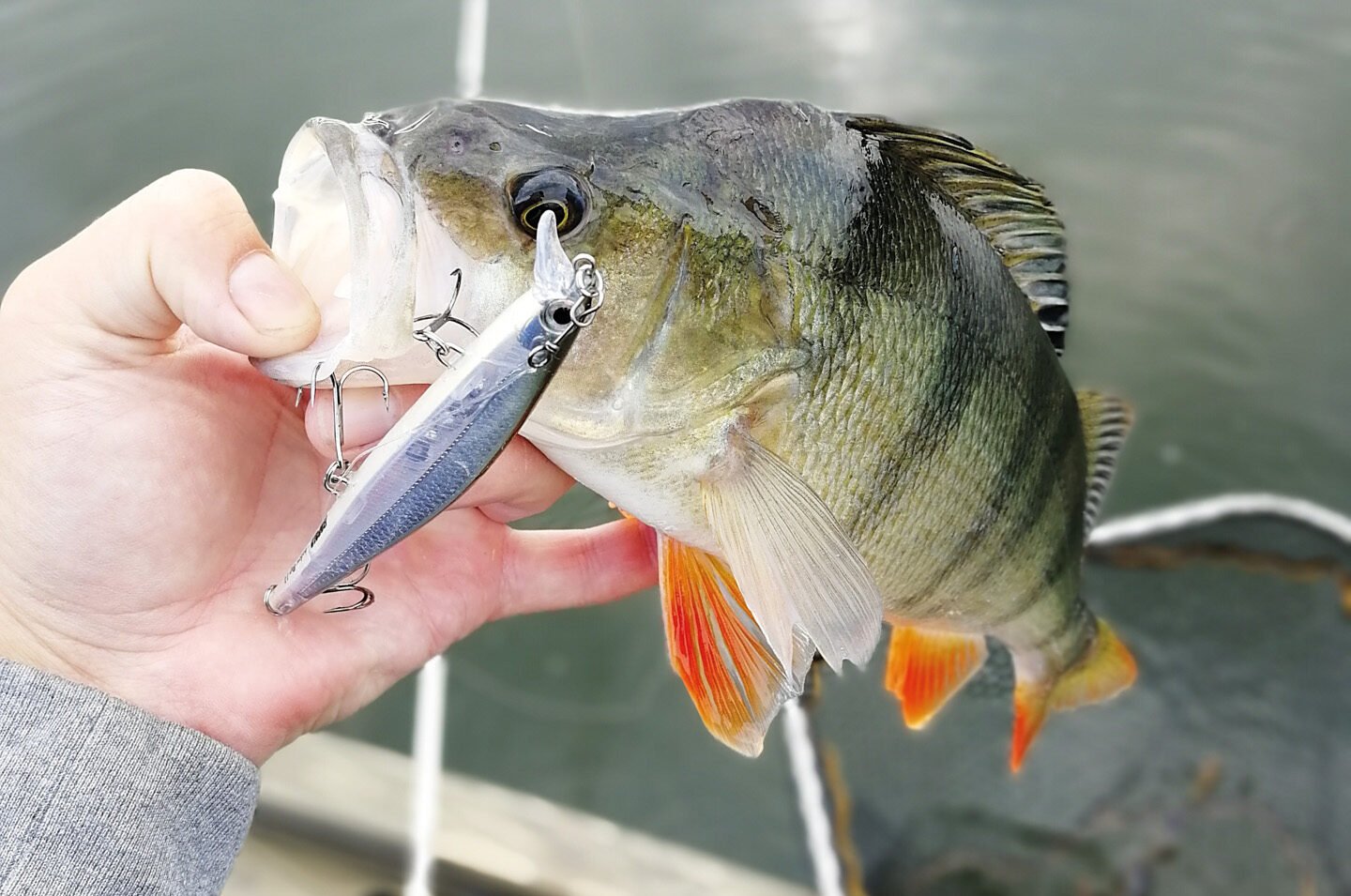Learn more about spin fishing for perch
Images
Spin fishing for perch is fun and incredibly effective! This type of fishing calls for a fairly light casting rod of about 6–8 ft with a casting weight of 5–30 g. Attach either a spool reel or a multiplier reel to your rod. A spool reel is ideal if you’re a beginner. It should be 1000–2500 in size. A braided line is best, as it lasts considerably longer and is stronger than nylon lines. Choose a braided line of 0.10–0.25 mm.
At the far end of the line, tie a leader of 30–70 cm to protect the line from pike teeth, stones, and branches, as well as to fasten the lure to. Use a double grinner knot to tie the leader to the main line. Instructions can be found here. The leader can be made of fluorocarbon, nylon, or titanium. A suitable size is 0.30–0.60 mm. Ask your nearest tackle shop for advice!
You can go spin fishing for perch all year round, but there are things to bear in mind to improve your luck. Perch are most active in the summer and can be fished almost anywhere in lakes, brackish waters, or streams. You can fish from a boat or from the shore using spinners, spoons, jigs, poppers, chatterbaits, and crankbaits. Vary your crank speed and occasionally stop the lure for a few seconds to trick the fishinto biting. Good places to catch perch in the summer are by rice terraces, pebbles, fallen trees, grass strips, and reed beds. Perch can bite on the bottom, near the surface, or in the middle of the water, so vary your fishing depth from the surface to the bottom until you find where the fish are.
In autumn, winter, and early spring, perch are less active and often stay in larger shoals. At these times of year, perch can often be found a little deeper, on slopes near a watercourse’s deep hollows, in pits, and by reeds that have not died down. Jig fishing is best at this time of year, but other lures can sometimes work.
When you cast out, let the jig sink to the bottom. Then tighten up the line and crank it in a few times, jerk the jig, and then the let the jig sink to the bottom again. Repeat until you’ve reeled the jig in. More often than not, perch bite when the jig sinks to the bottom between cranks. Vary the speed and jerk, but generally fish slower than
in the summer and fish mostly near the bottom. Jig fishing for perch is very much about having contact with the lure so you don’t miss the bite, because once the bite comes, you have to be quick with the counter bite!
Contact
Address
Email address
HittaFiske
Organization logotype




